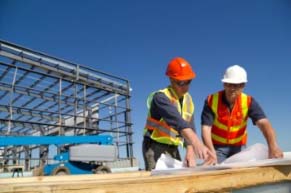Mining Life Cycle

- Exploration/Feasibilty Minerals exploration is the process of finding viable quantities of minerals to mine. The methods used for exploration vary at different stages of the process depending on the size of the area being explored, as well as the density and type of information sought.
- Assessments/Approval This stage involves comprehensive technical and socio-economic analysis to determine whether or not mining is economically feasible. It includes detailed assessments of geoscientific and engineering operational factors including mine design infrastructure availability, assessments of environmental impacts financial issues influencing a project’s license to operate and detailed financial analysis of costs and revenue projections and market assessment.
- Construction/Production This stage includes pre-construction and mine construction work beginning after all necessary permits and approvals have been obtained. Pre-construction prepares the mine site for construction. Steps can include removing old buildings, developing infrastructure and building camps for workers if there is insufficient availability of local accommodation. Sometimes mines grow large enough to support towns, with schools, medical facilities and recreation areas.
- Reclamation/Closure Once the ore has been obtained, the owner must rehabilitate the site. The intent of mine closure and rehabilitation is to return the land, as close as is reasonably possible, to its pre-disturbance condition suitable for use by traditional owners and as habitat for flora and fauna.
- Sustainability/Community To ensure that a safe and stable post-mining landscape has been created, it can be the companies intent to monitor the extent of vegetation regrowth, including species diversity and abundance. This occurs over several years. The company can also monitor the quantity and quality of runoff from the mined areas and ensure that measures are taken to prevent any adverse environmental impacts.
Operations (Read More) mine-operations Life Cycle of a Gold Mine – The Life Cycle of a Gold Mine series educates investors about the distinct phases in successful mine development from finding and outlining a mineral reserve, through mine construction, mining, and post-mining reclamation.
Newmont Mining Company - Mining 101: Understanding the Different Phases of
The Life Cycle of a Mineral Deposit—A Teacher’s Guide for Hands-On Mineral Education Activities. Download the publication for free.
Why Mining Is Important and Why Americans Should Care
Two editorials have been published recently on the importance of domestic mining to jobs, the supply chain, manufacturing and national security and why Americans should care. Don't Neglect Mining in America
America’s growing reliance on other countries for strategically important minerals is not much of an issue in this election year. It seems not to be on voters’ minds, but it really ought to be. U.S. mining policy has become increasingly inept — thoughtless and heedless of consequences. The U.S. has one of the most complex mine-permitting systems in the world, marked by delays and redundancies. Obtaining a mining permit typically takes seven to 10 years, five times longer than in Canada or Australia. Companies seeking to open a new mine sometimes must deal with 10 or more federal and state agencies. Read More Made In America Starts With Mined In America
As our anemic economy limps along, more voices in the policy debate call out for a return to the days of U.S. manufacturing competitiveness – a time of innovation and efficiency, quality jobs and career paths resulting in steady increases in GDP. There’s nothing wrong, and a lot that’s right, with that vision. But it’s hard to imagine a renaissance of America’s manufacturing sector absent a steady supply of the minerals that provide the energy and raw material inputs for our nation’s factories. Read More

